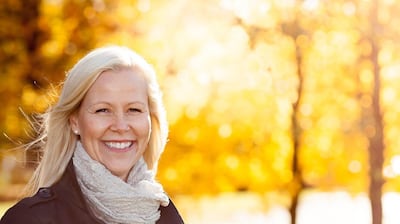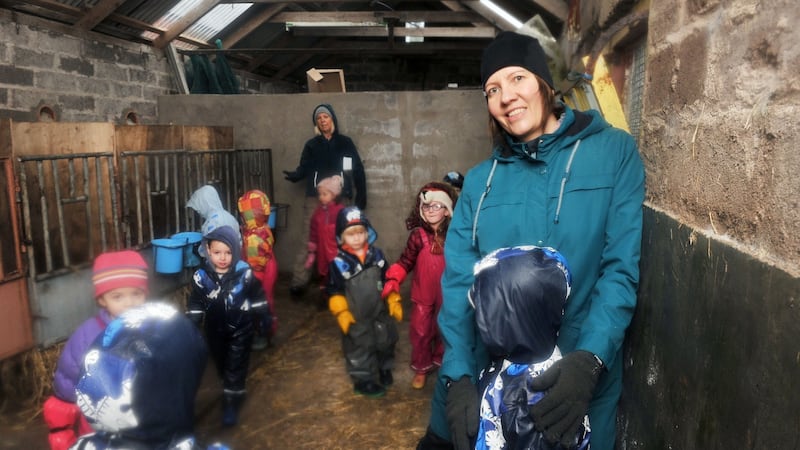It’s an old joke, with more than an element of truth, that a small child presented with some expensive toy finds longer-lasting pleasure playing with the cardboard box it came in.
Add a child’s imagination to open-ended material such as boxes and blocks and the possibilities are endless, while they will soon tire of a one-function gizmo.
Play is what children do to make sense of the world around them. Their joy, wonder and exuberance while playing, particularly outdoors, is obvious to all.

Educationalists are looking more and more at how to harness these characteristics for learning goals. How can the education system build on the natural enthusiasm and engagement of children at play, rather than, it seems, gradually crushing the enjoyment out of learning as toddlers start to climb the preschool, primary and secondary school ladder?
Researchers at the Playful Learning Centre in the University of Helsinki try to find answers to such questions. There's a fantastically equipped playroom lab there that is used to develop educational innovations and digital learning tools, as well as for teacher training.
Its co-founder, Dr Kristiina Kumpulainen, Professor of Education at the university's Faculty of Educational Sciences, was in Dublin recently to give a talk entitled The Joy of Play and Learning in Finnish Early Years Education.
Ever since the Finns surprised even themselves by topping global league tables of 15-year-old school pupils’ performance in mathematics, science and reading, their education system has attracted much attention.
The Programme for International Student Assessment (PISA) was introduced by the Organisation for Economic Co-operation and Development (OECD) in 2000 and is carried out every three years. While Finland's ranking in this 72-strong list has latterly slipped behind some Asian countries such as Singapore, Hong Kong and Shanghai (China), it still remains the best performing European country overall. (In the last round, in 2015, Ireland was ranked fifth best for reading, only one place behind Finland).
“We didn’t intend to be world leaders but we were pleased and it made us think we must be doing something right,” says Kumpulainen. A vivacious mother of three children, aged 20, 18 and eight, she is talking in an office in the small Finnish embassy off St Stephen’s Green, before her afternoon talk in the Ambassador’s residence in Ballsbridge.
Like many other European countries, Finland has been looking at how best to accommodate immigrant children in what is an increasingly multi-cultural society, as well as trying to cope with “digital distraction” – particularly among boys. A new curriculum for children aged seven to 16 was introduced in 2016 and one for early years education, age zero to six, was implemented last autumn.
It is too soon to see the results of the shift in Finnish education in recent years, says Kumpulainen. “Our government is trusting the communities who have contributed to this kind of policy and curriculum.”
The compulsory age for starting primary school in Finland is seven. But the transfer of responsibility for its daycare services from the social welfare ministry to the ministry of education in 2013 underlined the pedagogical value it now attaches to those early years.
There has been a distinct move towards understanding the early years as part of lifelong learning, says Kumpulainen. However, there can be a misconception that “it is just a matter of letting small children play and that this is all good”.

We all grow in different circumstances, with varying resources and opportunities, which becomes our fuel for play, she explains.
“Your imagination does not just come out of nowhere – it always draws on your experiences and your interactions with the world, be it material or human interactions. That is why education – and obviously parents do what they can – has a big role to enlarge children’s opportunities to explore, under free play or under guided play,” she explains.
In this context, the importance of early childhood education services in breaking generational cycles of socio-economic disadvantage is obvious. Skilled educators provide more “fuel”, to extend and stimulate children’s learning through play.
Within research circles, she says, there’s a move towards co-play and co-learning – no longer making the divide between teacher-directed and child-directed activities.
“You can try to create opportunities and learning environments where both are learners – the adult learning about the child – and they develop the activity together.” Of course, the professional takes care and responsibility of the bigger goals, she says, but the child comes in and extends the activity, of looking and learning.
“So, there is space for surprise and imagination,” she points out, rather than having, say, 12 children produce 12 identical birds’ nests under instruction.
Just what qualities and skills we need to be fostering in children growing up in an ever-changing digital, globalised world, and the place of technology in their education, are issues that Finns grappled with in creating their new core curricula, which include digital skills and “multi-literacy”.
Multi-literacy is an approach that was first developed in 1994 by researchers and educators in the US known as the New London Group. It broadens the concept of literacy beyond basic reading and writing.
“It is to do with making meaning or understanding and producing different kinds of texts,” she says. Those “texts” can be printed, digital, visual or audio, and how to “read” them, asking whether they are true or not, ie critical analysis, has become very important.
This approach “resonates well with the Finnish model of trying to be inclusive and give everybody an opportunity: how to find that connection and spark in every child”.
To illustrate how this can work, she gives the example of a forest project that “links imagination with real science”. First the children learn some Finnish fairytales and then they go into the forest to see where some of these storybook characters might live today and to learn about nature.
There, children as young as three to five, use digital cameras or mobile phones to take photos of what captures their interest, for example a large toadstool or gnarled tree. Back indoors, they share their photos and explain why they took them.
An app is then used to put a “mouth” on the photo of that toadstool or tree, or whatever, and the children record stories they have created for their particular forest character. Finally, parents come in to see the finished project.
“This,” says Kumpulainen “is how I see digital technologies can be used” – with children as active creators of content rather than passive consumers.
Rita Melia, Head of Training and Practice at Early Childhood Ireland (ECI) says that as digital technology has infiltrated all our lives, "we need to embrace it, but there needs to be a balance".
Almost half of parents surveyed said they saw a change in the behaviour of their children after using digital technology
However, the ECI recommends no digital media for children under two years of age and it should be capped at a maximum of an hour in any given day for children over two.
In early childhood centres, technology can enhance learning, she acknowledges, when it is used occasionally as a tool of discovery in a group situation, where the children can talk about what they’re finding out.
But on the negative side, children playing digital games in isolation and moving up levels is a bit like getting a star for colouring in, she suggests. “They are not making meaning – they are repeating and practising.”
Almost half of parents surveyed by the ECI in 2015 said they saw a change in the behaviour of their children after using digital technology.
“They are over stimulated,” says Melia. “Their brains are not ready to cope with the speed of the technology. When they are playing they can make up their own mind about time – they have time to process meaning.”
She believes that in Ireland there is “still a big job of work to be done” in promoting the value and importance of play to parents, who tend to think about children’s learning in the way they were taught themselves.
“We were taught to imitate; to learn a skill; that the teacher knew everything and would teach us everything we need to know,” she says. The “teaching for the test” approach, which reaches its climax for the Leaving Certificate, treats children as passive consumers of knowledge, “whereas we know that children are thinkers and active learners”.
Even very small children are huge founts of knowledge from their own home, culture and society. Yet this was never drawn on within the education system, she points out, but we now know that they get all of this active learning, exploring and thinking, through play.
“This will happen because the child is intrinsically motivated,” she says. Whereas giving them a star for colouring within the lines, or joining the dots, is an external motivator, “it does not offer them the opportunity to be creative or think outside the box”.
As Prof Kumpulainen puts it: “All learning is to do with joy – that does not mean it’s light and easy, but finding pleasure and that interest so you are willing to strive to do your best, and try harder and harder, because you are so motivated and engaged in the activity.”
And when it comes to the education of children, she has no doubt: “We have failed if there is no joy.”
Advice for parents
Play is “the best mirror” to understand how your child is developing as a human being, says Dr Kristiina Kumpulainen, Professor of Education at the University of Helsinki.
She advises parents to cherish play activity and to listen to children and observe their interests. “It is very important to engage in the play but still let the child be the leader.”
Don’t automatically think digital tools are bad – but join with the child in using them. “That is the best context to discuss, rules and practices and behaviour.”
She is not absolutist about “no screens”. It would be very strange if a one-year-old child sees a parent using a screen, such as a phone or a tablet, but they are not allowed to see it, she says. Inevitably it then becomes a lot more alluring.
When it comes to the negative impact of digital technology on children, she suggests parents need to look to their own engagement with it, adding: “Remember that children learn by imitation.”









